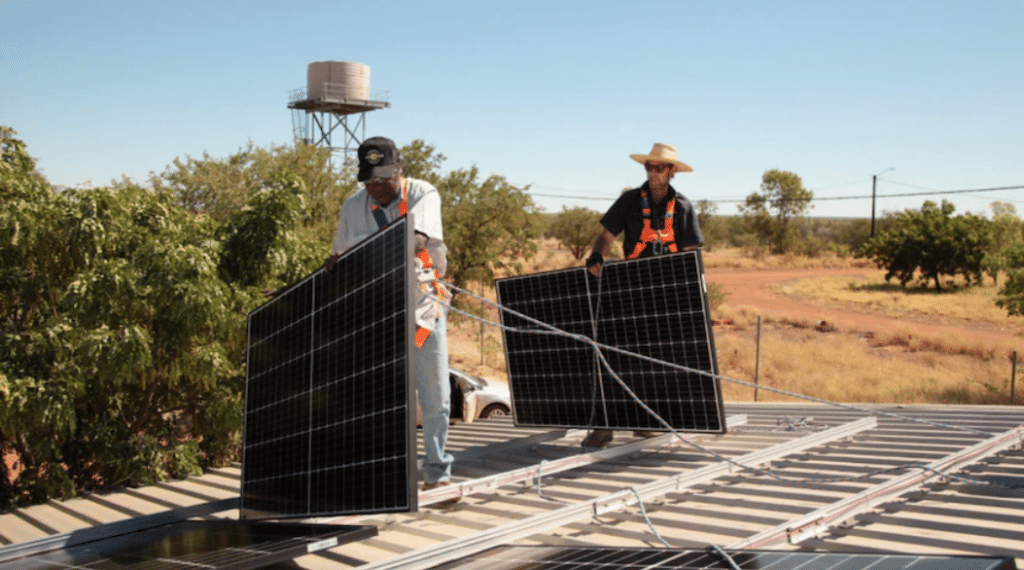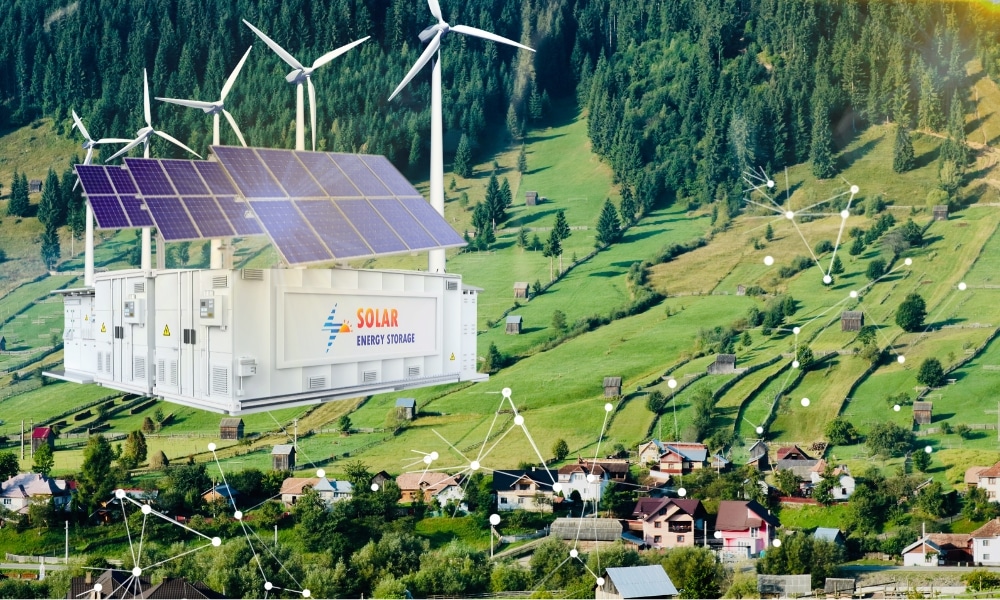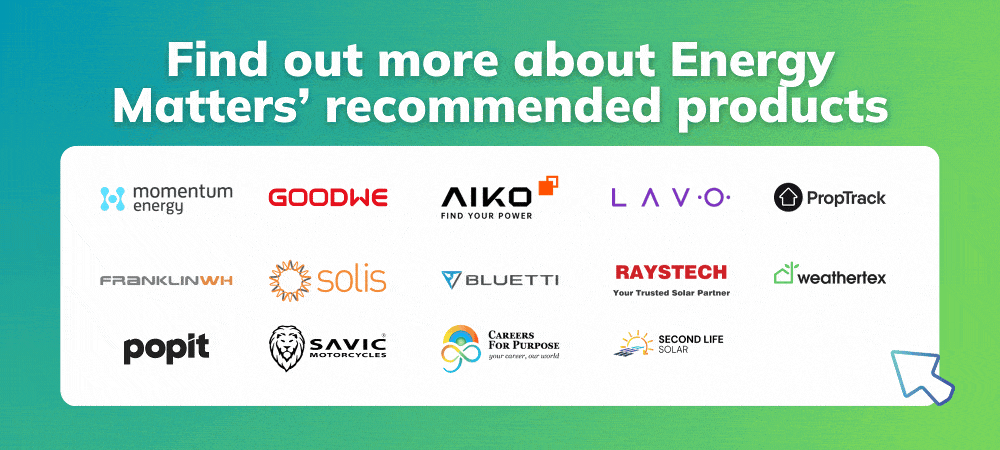Access to reliable electricity has long been challenging for many remote regions across Australia. With the rise of solar microgrids in Australia, communities previously left in the dark are now embracing clean, resilient energy. This shift promotes sustainability, boosts local economies, and enhances quality of life. At Energy Matters, we’re helping Australians unlock the true power of solar—wherever they live.
Understanding solar microgrids
A microgrid is a localised energy network with generation sources and defined boundaries. It can operate independently or connect to a larger grid. In the context of solar energy in remote areas, a typical microgrid includes:
- Solar photovoltaic (PV) panels: Solar PV panels capture sunlight and convert it into electricity.
- Solar inverters: Solar inverters convert the direct current (DC) electricity from the panels and batteries into alternating current (AC) for household and commercial use.
- Control systems: To manage the energy flow within the microgrid, optimise performance, and ensure stability.
- Solar battery storage: A solar battery storage system stores excess energy generated during the day for use at night or during cloudy periods.
These components work together to provide a stable and reliable power supply tailored to the community’s needs.
Use Energy Matters’ easy-to-use solar power and battery storage calculator to determine the size of your solar system with storage! Our solar calculator will generate performance information and potential savings.
We can send this information to 3 of our pre-vetted and trusted local installers in your area to receive obligation-free solar quotes.

Why remote Australian communities need energy solutions
Australia’s geography includes vast, isolated regions where connecting to the main electricity grid is expensive and technically complex. Traditional diesel generators have been the default solution but come with high operational costs, fuel logistics, and environmental drawbacks.
Remote areas face:
- Frequent power outages due to limited infrastructure
- High energy costs from fuel transport and maintenance
- Environmental risks from fossil fuel use
This is where solar energy in remote areas becomes a game-changer, offering cleaner, more affordable, and scalable energy.
How solar microgrids work in off-grid solar networks
In off-grid solar networks, solar microgrids function as the primary power source. Energy is generated on-site and stored locally, ensuring resilience and independence.
Key components of off-grid solar networks:
- Generation: Solar PV panels convert sunlight into electricity.
- Storage: Batteries store excess power for non-daylight hours.
- Distribution: Smart systems manage load sharing between homes or facilities.
- Monitoring: Software tracks usage, forecasts demand, and optimises output.
These systems can be customised to suit small Aboriginal communities, remote cattle stations, or island townships.
Benefits of solar microgrids in remote areas
Deploying solar energy in remote areas offers multiple advantages:
1. Energy independence
Communities no longer rely on distant grid infrastructure or fuel deliveries. They gain autonomy and control over their power.
2. Lower long-term costs
While initial setup may be higher, ongoing operational costs are significantly reduced compared to diesel generators.
3. Environmental sustainability
Solar microgrids reduce carbon emissions, helping Australia meet its climate goals while preserving natural ecosystems.
4. Job creation and local empowerment
System installation and maintenance generate local employment and encourage technical skill development within communities.
Challenges and considerations
While the benefits are substantial, deploying solar microgrids in remote areas presents challenges.
- Upfront capital costs: The initial investment in solar panels, batteries, and other equipment can be significant. However, long-term operational savings often outweigh these initial costs.
- Technical expertise: Designing, installing, and maintaining sophisticated microgrid systems requires specialised skills. Training local personnel is crucial for long-term sustainability.
- Land availability: A sufficient land area is needed to install solar panels, although innovative solutions like floating solar panels or integrating panels with existing infrastructure can mitigate this.
- Weather variability: While Australia has abundant sunshine, prolonged periods of cloud cover can impact energy generation. Adequate battery storage and potentially backup generation are essential.
- Community engagement: Successful implementation requires close consultation and collaboration with the local community to ensure the system meets their needs and preferences.
Addressing these challenges through careful planning, technological advancements, and community involvement is key to widespread adoption.
Successful implementations of off-grid solar networks
Across Australia, numerous remote communities are already reaping the rewards of off-grid solar networks. These success stories demonstrate the viability and transformative potential of this technology.
- Mining and pastoral stations: Remote industrial operations and agricultural properties increasingly adopt solar microgrids to reduce energy costs and their environmental footprint.
- Island communities: For isolated islands, solar microgrids offer a sustainable and reliable alternative to expensive and polluting diesel-powered electricity.
- Indigenous communities: Many Aboriginal and Torres Strait Islander communities in remote areas have embraced solar microgrids, which have led to significant cost savings and improved living standards.

To enable Indigenous communities to spearhead the remote renewables revolution by fostering community-owned solar projects throughout the Northern Territory, Original Power’s Clean Energy Communities Project partnered with the Marlinja community to establish the Marlinja Community Centre. Source & Image: First Nations Clean Energy Network
These examples highlight the adaptability and effectiveness of solar energy in remote areas when harnessed through microgrid technology. Learn more about real-world examples of solar microgrids in Australia in our Community Solar: What You Should Know.
The future of solar microgrids in Australia
The future of energy in remote Australia is intrinsically linked to the growth of solar microgrids. As technology advances and costs decline, these systems will become more economically attractive and technically feasible. Supportive government policies and funding initiatives are crucial to accelerate their deployment.
Furthermore, integrating smart grid technologies and exploring hybrid systems that combine solar with other renewable sources like wind can further enhance the reliability and resilience of off-grid solar networks. Solar energy in remote areas has immense potential to empower and sustain these communities.
Want to power your property with the sun? Energy Matters is here to help you design the perfect solar solution for your unique needs. Contact us today to start your journey toward energy freedom and explore how solar microgrids can transform your community’s energy landscape.




















































